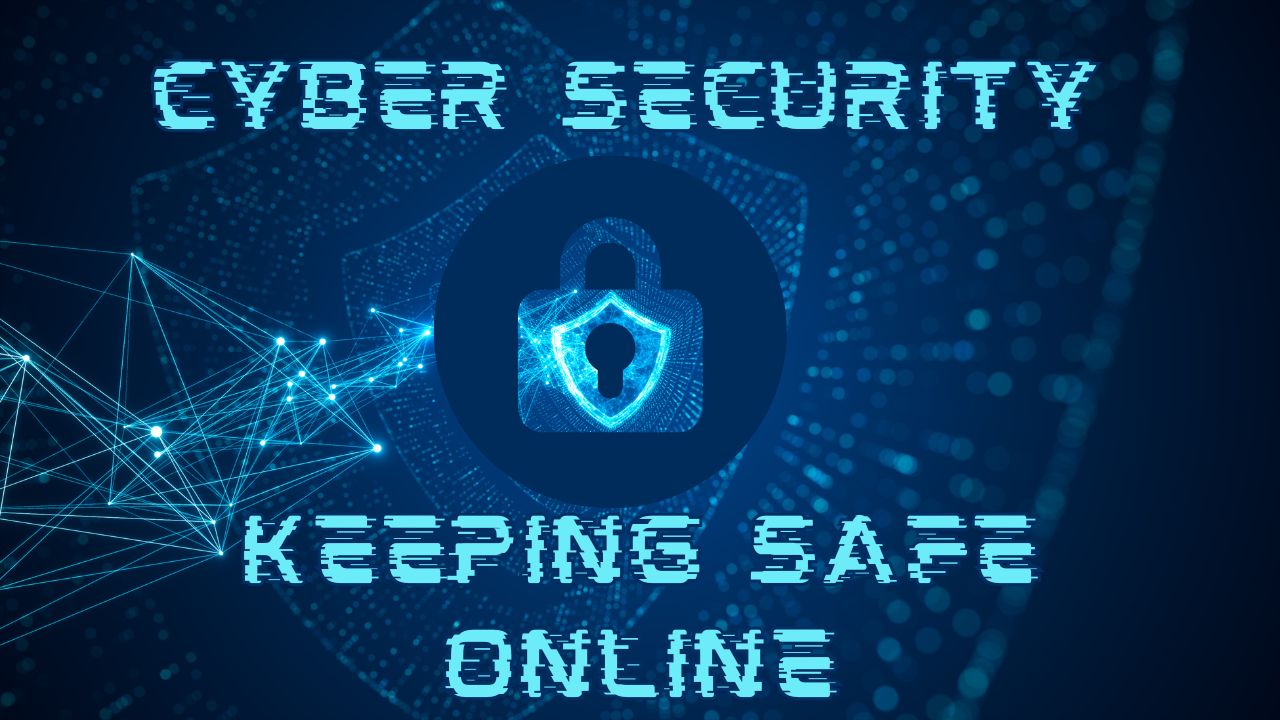The internet can feel like the Wild West these days. One moment, you’re casually browsing, and the next—BAM!—you’ve clicked on something shady, and suddenly, your personal data is at risk. In 2024, staying safe online is a non-negotiable. Whether you’re paying bills, shopping, or just checking memes, protecting yourself should be top of mind. This guide will walk you through practical, everyday tips to keep you and your data safe.
The Classic Trick: Stay Safe Online from Phishing Scams
Ever gotten an email from “your bank” that just feels…off? Phishing scams have been around forever, but they’ve gotten sneakier. Hackers send emails, texts, or messages pretending to be someone you trust, asking for your personal info. Classic stuff, but it works.
Here’s the golden rule: if it looks fishy, it probably is. Don’t click on links from random emails, no matter how official they look. Double-check the sender’s address. Banks won’t ask you to send sensitive info over email. If in doubt, visit the company’s website directly.
Ransomware: Stay Safe Online by Avoiding the Ransom
Ransomware is like something out of a bad movie. Your computer locks up, and a message appears demanding payment to free your files. It’s scary. In 2024, these attacks are on the rise, targeting both individuals and businesses.
How do you avoid it? Simple: back up everything. If ransomware hits, you’ll have copies of your files. Use cloud storage or an external hard drive. And keep your antivirus up to date. If you do get hit, don’t pay the ransom. Paying doesn’t guarantee you’ll get your files back, and it just encourages the bad guys to keep doing it.
Related Post: Best Practices for Online Security in 2024: Protect Your Digital Life
Passwords: Stop Using ‘123456’ and Stay Safe Online
It’s 2024—are we seriously still using weak passwords? If your password is “password” (yes, people still do that), you’re asking for trouble. Here’s a quick tip: longer is stronger. Use a mix of letters, numbers, and symbols. And don’t use the same password for every account.
If you’re like most of us and can’t keep track of 20 different complex passwords, get yourself a password manager. It stores everything securely and can even generate strong passwords for you. Trust me, it’s better than trying to remember a string of random characters.
Two-Factor Authentication: Your Best Friend in Staying Safe Online
Here’s a simple trick to double your online safety: use two-factor authentication (2FA). It’s like adding a second lock to your door. Even if someone gets your password, they still need the code sent to your phone. Most banks, social media, and email services offer it, so turn it on wherever you can.
Think of it as the digital equivalent of locking your front door and the back gate. Sure, it’s one more step, but it makes your accounts much harder to break into. And honestly, who doesn’t love a little extra peace of mind?
Public Wi-Fi: Convenience or Catastrophe? Stay Safe Online with These Tips
We’ve all done it—used that free Wi-Fi at the coffee shop or airport. But here’s the catch: public Wi-Fi is a hacker’s playground. It’s like shouting your private info across the room. If you’re doing anything sensitive, like banking or shopping, don’t use public Wi-Fi.
If you absolutely must, at least use a Virtual Private Network (VPN). It encrypts your connection, so even if someone’s snooping on the network, they can’t see what you’re doing. Think of it as putting a disguise on your online activity. Better safe than sorry, right?
Kids and Online Safety: It’s Not Just a Game
Kids today spend more time online than ever, and let’s face it—they’re not always cautious. Between gaming, social media, and YouTube, they can stumble into dangerous territory without realizing it.
Set ground rules. Keep the lines of communication open. Let them know why certain websites or apps are off-limits, and encourage them to talk to you if they see something weird. And don’t forget to use parental controls. They’re not about spying; they’re about protecting.
I once caught my nephew about to share our home address with someone he met in an online game. Yikes! That was an eye-opener. Kids don’t always get how dangerous it can be.
Social Media: Oversharing Is a Recipe for Trouble
We’ve all done it—posted vacation pics, tagged our location, or shared a little too much about our personal lives. But oversharing on social media is like leaving the door wide open for cybercriminals. They can use the info you post to steal your identity or even break into your home when they know you’re away.
A good rule of thumb? If you wouldn’t shout it in a crowded room, don’t post it online. Keep your profiles private and think twice before posting anything that gives away too much info. And please, save the vacation photos for after you’re back home!
Software Updates: Don’t Hit ‘Remind Me Later’—Stay Safe Online with Updates
We’re all guilty of this one. That pop-up says your device needs an update, and what do we do? Click “remind me later.” But here’s the thing: those updates often fix security holes. Hackers love outdated software because it makes their job easy.
So, when your phone, computer, or apps tell you it’s time to update, do it right away. Or better yet, turn on automatic updates so you don’t even have to think about it. It’s like getting a fresh lock for your door every time there’s a new threat out there.
Antivirus Software: Your Digital Bodyguard in Staying Safe Online
Antivirus software is your first line of defense against malware and viruses. It’s not just for tech geeks—it’s for everyone. In 2024, hackers are smarter, and viruses are nastier, so you need all the protection you can get.
Choose a reputable antivirus program and let it run in the background. It’ll catch anything suspicious before it becomes a big problem. Think of it as having a bouncer at the entrance to your digital world, turning away troublemakers before they even get in.
Be Wary of Freebies
Here’s a quick tip: if something seems too good to be true, it probably is. Free downloads, free software, free movies—sometimes, free stuff comes with hidden malware or spyware. Hackers love hiding malicious code in seemingly harmless downloads.
Stick to trusted sources. If you’re downloading software, get it from the official site or a reputable app store. That free movie or game might seem like a great deal, but it could come with a side of malware.
Backups: Your Safety Net in Staying Safe Online
Picture this: your computer crashes, and poof! All your files are gone. Now what? If you’ve got backups, no problem. If you don’t, you’re in trouble.
Backups are your safety net. You don’t need to be a tech wizard to do it, either. Set up automatic backups to the cloud or an external drive. That way, even if your device gets hit with ransomware or just decides to stop working one day, you’ll still have all your important stuff.
Avoiding Scams on Social Media
Scammers are lurking everywhere, including social media. Fake giveaways, fraudulent ads, and sketchy direct messages—these are just a few ways people get tricked. The rule is simple: if it sounds too good to be true, it probably is.
Don’t click on strange links, even if they come from a friend (their account might have been hacked). Verify any giveaways or offers before participating. And if someone slides into your DMs asking for money or personal info, block them immediately.
Online Shopping: Keep Your Wallet Safe and Stay Safe Online
We all love the convenience of online shopping, but it’s a favorite playground for scammers. Fake websites and fraudulent sellers are always looking for their next victim. To stay safe, shop only from well-known retailers or trusted platforms.
Use credit cards or secure payment methods like PayPal, which offer buyer protection. And always look for that little padlock icon in the browser’s address bar—that shows the site is secure. No padlock? No purchase.
Don’t Ignore Security Alerts
Sometimes, your phone or email might alert you that someone tried logging into your account. Maybe it wasn’t you—but what do most of us do? Ignore it.
Here’s a pro tip: never ignore security alerts. If you get an unexpected alert, check it out right away. It could be the difference between keeping your account safe and losing it to a hacker. Change your password immediately if something seems off.
Conclusion: Common Sense Is Your Best Defense in Staying Safe Online
When it comes to online safety, common sense goes a long way. Be skeptical of emails and offers that seem too good to be true. Protect your passwords. Don’t overshare. And above all, stay aware. The internet isn’t going anywhere, and neither are the threats, but with a little caution and a few good habits, you can stay safe online in 2024 and beyond.
At the end of the day, it’s all about being smart and staying one step ahead. The online world can be risky, but with these tips, you can navigate it safely and securely.








